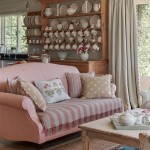Arabian Home Decor Ideas For Living Room 2024
The allure of Arabian home decor lies in its rich tapestry of history, culture, and artistry. This style, characterized by its opulence, intricate details, and warm ambiance, can transform a living room into a haven of comfort and elegance. In 2024, the trends in Arabian-inspired living rooms lean towards a harmonious blend of traditional elements with modern sensibilities, creating spaces that are both functional and visually stunning.
Achieving the desired Arabian aesthetic requires a thoughtful approach to color palettes, furniture selection, textile choices, and decorative accents. It is about creating an immersive experience that evokes the spirit of the Arabian Peninsula, while still being adaptable to individual preferences and modern living requirements.
One of the initial considerations when embarking on an Arabian-inspired living room transformation is the selection of a suitable color palette. Traditionally, warm earth tones such as terracotta, ochre, and sand form the base. These colors evoke the desert landscape and provide a grounding element for the room. However, the introduction of jewel tones such as sapphire blue, emerald green, and ruby red can add a touch of regal splendor. These colors are often incorporated through textiles like cushions, rugs, and curtains. Metallic accents, particularly gold and silver, further enhance the luxurious feel, often found in lamps, mirrors, and decorative objects.
Furniture plays a crucial role in defining the Arabian ambiance of a living room. Low seating arrangements are a hallmark of this style, encouraging a sense of relaxation and communal gathering. Opt for comfortable sofas and floor cushions upholstered in rich fabrics like velvet, silk, or brocade. Intricate carvings on wooden furniture, such as coffee tables and side tables, add an authentic touch. Consider adding an ornate screen, known as a mashrabiya, to create a sense of privacy and architectural interest. These screens, traditionally made of intricately carved wood, can be used to divide the living room or simply serve as a decorative element.
Textiles are paramount in creating the desired Arabian atmosphere. Layering different textures and patterns is key. Plush rugs with intricate geometric designs or floral motifs ground the space and add warmth. Silks, velvets, and brocades, used for cushions, throws, and curtains, contribute to the overall opulence. Consider using sheer fabrics for curtains to allow natural light to filter through, creating a soft and inviting glow. Employing textiles with metallic threads can further enhance the luxurious feel.
Lighting is another crucial element in Arabian home decor. Soft, diffused lighting is preferred over harsh, direct light. Ornate lanterns, made of metal and glass, cast intricate patterns on the walls and ceilings, creating a magical ambiance. Candles and oil lamps can also be used to add a romantic and intimate touch. Consider incorporating a statement chandelier with intricate detailing to serve as a focal point.
Decorative accents are the final touches that bring the Arabian-inspired living room to life. Intricately designed trays, serving sets, and incense burners add a touch of authenticity. Displaying traditional Arabian artifacts, such as pottery, calligraphy, and metalwork, can further enhance the cultural immersion. Consider adding plants, such as palms or ferns, to bring a touch of nature into the space. The scent of traditional Arabian perfumes, such as oud or amber, can also contribute to the overall sensory experience.
Emphasis on Luxurious Fabrics and Textures
The foundation of an Arabian-inspired living room often rests on the careful selection and layering of luxurious fabrics and textures. The goal is to create an environment that is not only visually appealing but also tactilely inviting. Velvet, with its soft and plush texture, is a staple in this style. It can be used for upholstery on sofas and chairs, creating a sense of opulence and comfort. Silk, known for its smooth and lustrous surface, is another popular choice. It can be used for cushions, throws, and curtains, adding a touch of elegance and sophistication. Brocade, with its intricate patterns and raised designs, adds a regal touch. It can be used as an accent fabric on cushions or curtains, creating a focal point of visual interest.
Beyond these primary fabrics, consider incorporating other textures to add depth and dimension to the space. Embroidered fabrics, with their intricate stitching and embellishments, can add a touch of craftsmanship and artistry. Woven fabrics, such as linen or cotton, can provide a grounding element, balancing the richness of the other materials. Faux fur throws can add a touch of warmth and comfort, particularly during the colder months. The key is to create a harmonious balance between different textures, ensuring that the space feels both luxurious and inviting.
The use of patterns is equally important. Geometric patterns, often inspired by Islamic art and architecture, are a hallmark of Arabian design. These patterns can be found on rugs, cushions, and wallpaper, adding a sense of visual complexity and sophistication. Floral patterns, often featuring stylized flowers and leaves, can add a touch of femininity and romance. Damask patterns, with their intricate and symmetrical designs, can add a sense of timeless elegance. When incorporating patterns, it is important to consider the scale and color palette. Larger patterns can make a space feel bolder and more dramatic, while smaller patterns can create a more subtle and refined effect. The colors of the patterns should complement the overall color scheme of the room, creating a cohesive and harmonious ambiance.
The placement of textiles is also crucial. Layering rugs, for example, can add depth and dimension to the space. Consider placing a large area rug to define the seating area, and then layering smaller rugs on top to add visual interest. Arrange cushions strategically on sofas and chairs, creating a comfortable and inviting seating arrangement. Drape throws over the backs of sofas and chairs, adding a touch of warmth and texture. Hang curtains in multiple layers, using sheer fabrics to filter light and heavier fabrics to provide privacy and insulation. By carefully considering the placement and layering of textiles, one can transform a living room into a luxurious and inviting Arabian haven.
Implementing Intricate Lighting Designs
Lighting is an indispensable element in creating the desired ambiance in an Arabian-inspired living room. It's not merely about illumination but about crafting an atmosphere that evokes warmth, mystery, and a sense of ethereal beauty. Intricate lighting designs, characterized by ornate fixtures and diffused light, are essential to achieving this effect. Traditional Arabian lighting fixtures often feature metalwork, glass, and intricate geometric patterns.
Lanterns are a quintessential element of Arabian lighting. These can be suspended from the ceiling, placed on tables, or arranged on the floor. The metalwork on the lanterns often features intricate patterns that cast mesmerizing shadows on the surrounding walls and ceilings. The glass panels can be clear, colored, or stained, adding another layer of visual interest. Choose lanterns that complement the overall color scheme of the room, and consider using different sizes and shapes to create a dynamic and layered effect.
Chandeliers can serve as a focal point in an Arabian-inspired living room. Opt for chandeliers with intricate metalwork, glass beads, or crystal accents. These chandeliers can be suspended from the center of the room, creating a dramatic and eye-catching effect. Consider the size and scale of the chandelier, ensuring that it is proportionate to the size of the room. Dimmer switches can be used to adjust the brightness of the chandelier, allowing for greater control over the ambiance.
Wall sconces can provide soft and diffused lighting, adding a touch of warmth and intimacy to the space. Choose sconces with metalwork or glass details that complement the overall design scheme. Place sconces strategically on the walls to highlight architectural features or artwork. Consider using sconces with dimmer switches to adjust the brightness as needed.
Floor lamps can provide both ambient and task lighting. Opt for floor lamps with ornate bases and shades made of silk or other luxurious fabrics. Place floor lamps strategically in corners or next to seating areas to provide additional lighting. Consider using floor lamps with adjustable arms to provide task lighting for reading or other activities.
Candles and oil lamps can add a romantic and intimate touch to the Arabian-inspired living room. Arrange candles in groups on tables or shelves, creating a warm and inviting glow. Use oil lamps with fragrant oils to add a subtle aroma to the space. Be sure to exercise caution when using candles and oil lamps, ensuring that they are placed away from flammable materials.
The key to successful Arabian lighting is to layer different types of light, creating a sense of depth and dimension. Use a combination of ambient, task, and accent lighting to create a balanced and harmonious effect. Experiment with different colors and intensities of light to achieve the desired mood. Consider using smart lighting systems to control the lighting remotely and create customized lighting scenes. By carefully considering the lighting design, one can transform a living room into a magical and enchanting Arabian oasis.
Incorporating Authentic Arabian Decorative Elements
The incorporation of authentic Arabian decorative elements is essential for creating a truly immersive and captivating living room. These elements, often steeped in history and cultural significance, add a layer of depth and authenticity to the space, transforming it from a mere collection of furniture and textiles into a reflection of Arabian heritage. The selection of these elements should be guided by a desire to capture the essence of Arabian artistry and craftsmanship.
Calligraphy, the art of beautiful writing, is a prominent feature in Arabian art and design. Incorporate calligraphy into the living room by hanging framed calligraphic art pieces on the walls. Choose pieces that feature verses from the Quran, poems, or proverbs. Consider using different calligraphic styles, such as Kufic, Naskh, or Thuluth, to add visual variety. Alternatively, use calligraphic motifs on cushions, rugs, or wallpaper.
Pottery and ceramics are an integral part of Arabian culture. Display traditional Arabian pottery, such as vases, bowls, and plates, on shelves, tables, or mantels. Choose pieces with intricate designs and vibrant colors. Consider using pottery made from different materials, such as terracotta, porcelain, or glazed ceramics. Alternatively, use ceramic tiles to create a mosaic pattern on a wall or floor.
Metalwork, particularly brass and copper, is another hallmark of Arabian craftsmanship. Incorporate metalwork into the living room by displaying trays, serving sets, and incense burners. Choose pieces with intricate carvings and geometric patterns. Consider using metal lamps, mirrors, or decorative objects. Alternatively, use metal accents on furniture, such as brass handles or copper trim.
Textiles, such as carpets, cushions, and tapestries, can also serve as decorative elements. Choose textiles with traditional Arabian patterns, such as geometric designs, floral motifs, or paisley patterns. Consider using textiles made from natural materials, such as wool, silk, or cotton. Alternatively, use textiles with metallic threads or embroidery to add a touch of opulence.
Incense burners are not only functional but also decorative. Choose incense burners made of metal, ceramic, or wood, with intricate designs and embellishments. Burn traditional Arabian incense, such as oud, frankincense, or myrrh, to create a fragrant and inviting atmosphere. Consider using an electric incense burner for a more convenient and safer option.
Water features, such as fountains or small pools, can add a sense of tranquility and serenity to the Arabian-inspired living room. Consider installing a small fountain in a corner of the room or on a patio. Use water features made of stone, ceramic, or metal. Alternatively, use a small pool with floating candles and flowers.
Plants, such as palms, ferns, and succulents, can bring a touch of nature into the Arabian-inspired living room. Choose plants that are native to the Arabian Peninsula or that are well-suited to arid climates. Display plants in ornate pots and planters. Consider using artificial plants if natural plants are not practical.
By carefully selecting and incorporating authentic Arabian decorative elements, one can transform a living room into a captivating and culturally rich space that reflects the beauty and artistry of Arabian heritage.

202 Likes 15 Comments Deluxe Home Deluxehome Uae On Instagram Quality C Elegant Living Room Decor Bedroom False Ceiling Design

1001 Arabian Nights In Your Bedroom Moroccan Décor Ideas

Home Decor Can Your Style Be A Reflection Of Space Vogue

Men Majlis

1001 Arabian Nights In Your Bedroom Moroccan Décor Ideas

Summer Home Decor Ideas Vogue

1001 Arabian Nights In Your Bedroom Moroccan Décor Ideas

1001 Arabian Nights In Your Bedroom Moroccan Décor Ideas

Men Majlis

Crafting A Biophilic Interior Design Home 2025
Related Posts







